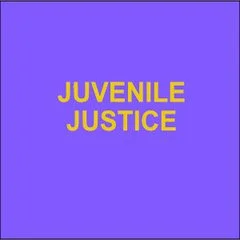By O'Meara Daly, Eoin and Redmond, Sean and Naughton, Catherine
The Bluetown study aimed to replicate the Greentown study. The Greentown study was innovative in methodology and purpose. It examined the context of the minority of young people in Ireland who engaged in ‘atypical’ crimes (burglary and drugs for sale and supply), where criminal activity tended to be more serious and prolific. It identified the presence of a local criminal network and found that engagement in the network was plausibly associated with repeat offending. Two replication case studies, Bluetown and Redtown, aimed to examine if the Greentown findings resonated in other locations in Ireland. The current study aimed to identify if the Greentown findings could be generalised to another anonymised Garda sub-district, Bluetown. The Twinsight methodology Redmond (2016) specifically designed the Twinsight methodology for the Greentown study. In Greentown, local criminal network maps constructed from PULSE crime data illustrated crime transactions (focusing on burglary and drugs for sale or supply) including transactions between adults and young people. Similarly, criminal network maps were constructed for Bluetown during the period of 2014–2015. The network map provided a framework to harness the expert knowledge of members of An Garda Síochána in Bluetown and facilitated confidential discussions around key incidents, young people’s contexts and relationships. Key findings Garda narratives centred on four area-based criminal networks that existed in Bluetown. These were distinct from each other and spread over a large geographical area. Network 1 was family based and hierarchical in nature, with Networks 2 and 3 grounded in peer relationships and their locality. Garda respondents described Network 4 as a drugs network with a loose organisational structure. According to Gardaí, all four networks in Bluetown contained relationships with different levels of trust between members and this affected network strength and stability. Criminal network strength and stability was also influenced by fear and intimidation. Similar to Greentown, each network contained members with family connections to crime and involved young people with a combination of risk factors. In Bluetown, proximity to offending peers and the normalisation of criminal behaviour were additional factors with networks developing in localities for sustained periods.
Conclusion There was sufficient consistency between the original Greentown findings and the replication study in Bluetown: notably regarding Network 1 and its family orientation, in addition to the chaotic backgrounds of young people in problematic peer groups. One difference between Greentown and Bluetown was that the latter represented a large urban sub-district with four distinct criminal networks identified by Garda respondents on the criminal network map. As a result, some Garda respondents were limited in their knowledge of all areas on the PULSE informed map. In Greentown we identified that engagement in local criminal networks contributed to young people developing more serious and prolific crime trajectories. Likewise, in Bluetown the findings suggest that engagement in networks contributed to a significant number of young people developing more serious and prolific offending patterns. The combination of Bluetown and Greentown findings indicates that the structure and dynamics of networks may be context-specific. Both sets of findings suggest that engagement in a local criminal network may have contributed to the young people’s ‘atypical’ criminal activity
Limerick: School of Law, University of Limerick. 2020. 64p.



















